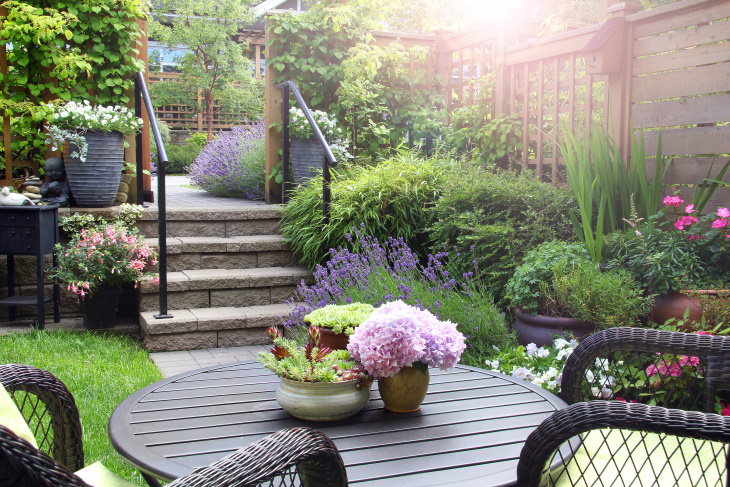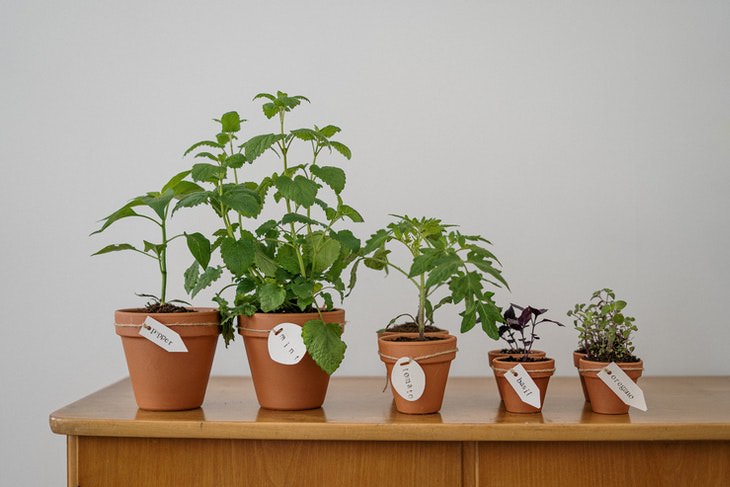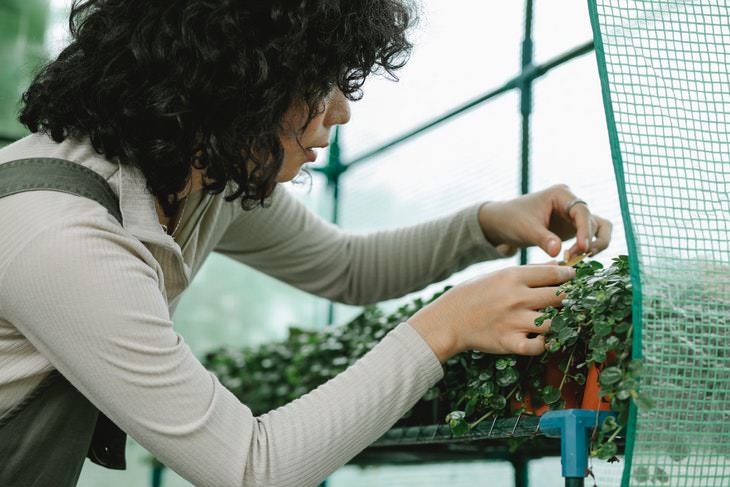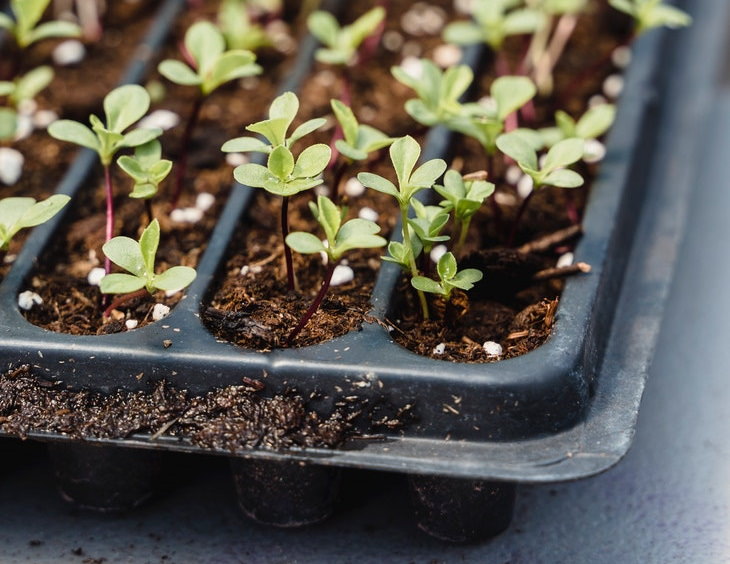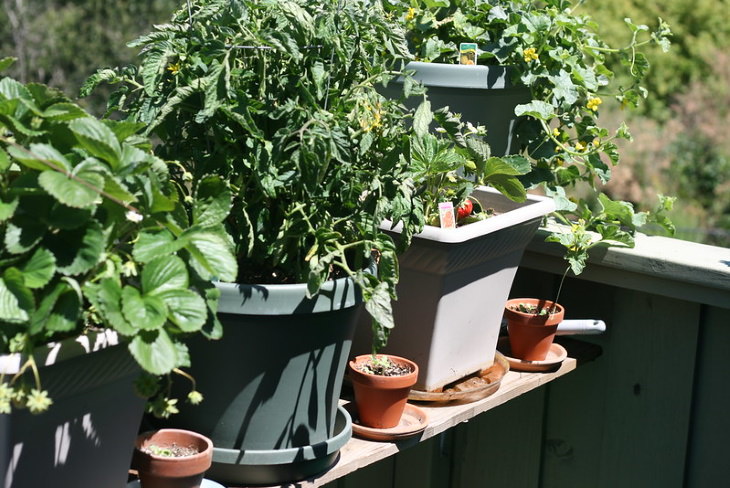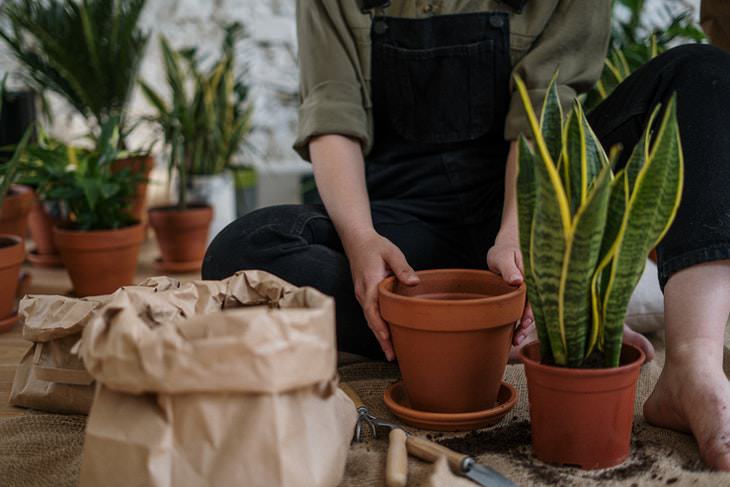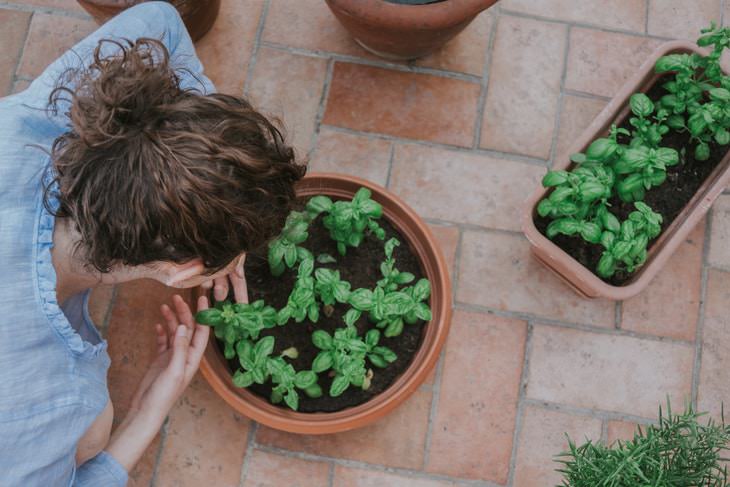1. Be mindful of the light conditions
Do you think that your balcony is not suitable for a container garden because it receives too much direct sunlight? Or maybe, your patio doesn’t get much sun during the day, so you’d rather not risk planting anything there. The great news is that it is possible to turn virtually any corner of your home or outdoor area into a green corner, provided that you introduce the right plants.
It’s important to assess the amount of sunlight in the area as accurately as possible before you purchase any plants. To do so, go to the place in question at different times of the day: once in the morning, once at noon, and one last time an hour or so before sundown. You can even take a few photos of the area and record the time they were taken - this will help you calculate how many hours of direct shade and sun the future plants will receive.
Now that you know how much sun and shade you can provide, you can purchase your plant:
- Full sun plants require at least 6-8 hours of direct sunlight every day. If you’re growing vegetables, they should receive 10 hours or more.
- Part sun and part shade plants need a minimum of 4-6 hours of sun daily.
- Full shade plants will grow well even if they only get 3 hours of sunlight a day. This information should be listed on the label of each plant.
2. Choose the best container for your purposes
When choosing a container, there are two non-negotiable criteria - drainage and size. Make sure that the container drains water well and has at least one 1-inch hole - this will prevent root rot. Also, it’s always best to get the biggest container you can fit within your space because small containers dry out faster, which is stressful for most plants and will cause long-term health and pest issues. In addition, repotting is a stressful experience for plants, so think ahead and pick a container that would hold a plant for at least 2 years to come.
What type of material should the container be made of? It depends on your needs, as every type of container has its advantages and disadvantages. Here’s a quick review:
- Clay and terracotta planters are pretty, but they are fragile and may even crack when exposed to freezing temperatures. So they’re not the best choice for plants you keep outdoors year-round, and you probably shouldn’t store them in the shed.
- Plastic pots are affordable and lightweight, but they are not always sturdy. Choose containers that are made of thicker and more flexible plastic because these are the least likely to break.
- Concrete planters are sturdy and long-lasting. You don’t have to worry about leaving them outside, but they’re not suitable for balconies and decks because they weigh a lot. Due to their excessive weight, it’s best to choose their location wisely, as you’ll likely never move it again, especially if it’s a bigger container.
- Polyurethane foam containers are super lightweight and resistant to cracking. They also protect the roots from extreme temperatures, so they’re a good investment for bigger outdoor planters.
There are also wooden and metal containers, which look really nice, but most of them are not temperature- and water-resistant, so they’re best kept for your indoor garden.
Related Article: How to Identify and Manage 10 Common Plant Diseases
3. Save the tag
If you’re a beginner and you’re not very familiar with the needs of different plants, or you just introduced a new plant into your container garden, read and save the plant tag. Tags contain a lot of useful information, such as the plant’s water and sunlight needs, whether or not it’s a perennial plant, and how it grows. Lastly, the tag contains the plant’s name, which will help you find out more about the care instructions online if the plant starts looking bad.
4. Don’t be afraid to shape the plant
Many beginners are afraid to touch and interact with their plants for fear of causing accidental harm. But interacting with your plants is actually an essential skill to have. First and foremost, you need to remove dry leaves and flowers occasionally to keep your plants looking healthy, neat, and fresh. This process is called deadheading, and it’s necessary because it helps the fresh leaves absorb more sunlight. Deadheading is likewise beneficial for flowering plants because it will make them bloom more.
Apart from tidying up any dry leaves and flowers, it’s also important to trim some plants to prevent them from looking too spindly. Rhododendrons, Persian shield plants, and even some petunias benefit from this practice.
5. Opt for dwarf varieties of plants
It doesn’t matter if you’re growing a tree or some fruit and veggies, choosing the dwarf variety of the plant is always a good idea, as these plants usually fare better in containers. There is a wide variety of dwarf fruit and vegetables available these days, and you can easily grow snack-sized peppers, pot blueberries, cherry tomatoes, dwarf lettuce, or even dwarf fruit trees in a planter.
The advantage of growing trees and larger shrubs, like figs or pomegranates in a pot, is that you can transfer the not frost-resistant plants into your home during the cold months.
6. Colors matter
You may think that the color of your planters is all preference and no practicality, but that’s not quite right. If you live in a hot climate and you’re using dark-colored containers, this could heat up the root system of the plants and kill them. Instead, use light-colored containers to keep roots cool, much like they would under natural conditions. If you already have a number of dark-colored pots, consider painting them. As long as you choose a non-toxic and waterproof type of paint, it shouldn’t harm your plants.
7. Choose the right potting soil
Using the soil from your yard or nearby area is not a good idea in the vast majority of cases. This soil may be full of contaminants that will end up killing the plants, it dries out very quickly and doesn’t drain as well as commercial potting mixes.
The advantage of store-bought potting mixes is that they’re sterile and perfectly balanced for the needs of specific plants. Some of these mixes also contain time-release fertilizer, so you may not need to fertilize a freshly repotted plant for a few weeks, too.
8. Nourish your plants
Speaking of fertilizer, it’s key to understand that plants that live in containers cannot get the same amount of minerals and nutrients they require to thrive from the potting mix. For this reason, you need to fertilize them regularly. To do so, add a diluted water-soluble fertilizer once every two weeks, or according to the recommendations on the plant tag.
It’s especially important to fertilize flowers and vegetables regularly because this will increase their yield. Keep in mind that different plants may require a different kind of fertilizer.
9. Mix and match the plants
Not every plant needs its own pot. In fact, layering and combining plants with a neighbor is a great idea. For example, you can grow different herbs together, which makes harvesting them more convenient. The only thing to keep in mind is that all the plants in a pot should require the same type of soil, the same amount of light, and identical water needs.
Otherwise, one of the plants will always suffer, no matter how much you care for the planter. As a general rule, plants with thinner leaves like herbs and grasses require more moisture, and those with thick leaves (think succulents and cacti) need less water.
Layering different decorative plants is a beautiful way to make your container garden look more elaborate and sophisticated too. To achieve that intricately layered look, include a thriller, a filler, and a spiller plant all in one pot. What are those?
- Thrillers are taller plants like cannas, sunflowers, or even a tall grass or shrub. They add height and drama to a flower composition.
- Fillers are just what the name suggests - plants that add volume to the planter and make it look fuller and richer. Geranium, lavender, marigold, and begonias are all good examples of filler plants.
- Lastly, spillers are climbing plants like ivy that hang over the edge of a container.
You can mix and match flowering plants with those that have pretty leaves and include several kinds of each plant to add more color and texture to the overall composition.
10. Prepare for the cold months
Everything in your garden changes in the winter. Even if you live in a hot climate and don’t experience any frost or snow, the strength and the angle of the sun changes in the winter months. All of these factors will affect your garden, so it’s important to be prepared and plan ahead.
In late fall, before the first frost, you’ll need to empty the pots with your annual plants and vegetables, and disposing or composting the plants. You’ll also need to find a warm place for your ceramic and terracotta containers, as well as move any fruit trees or other plants that won’t survive the winter.
Share these useful tips and tricks with family and friends!

